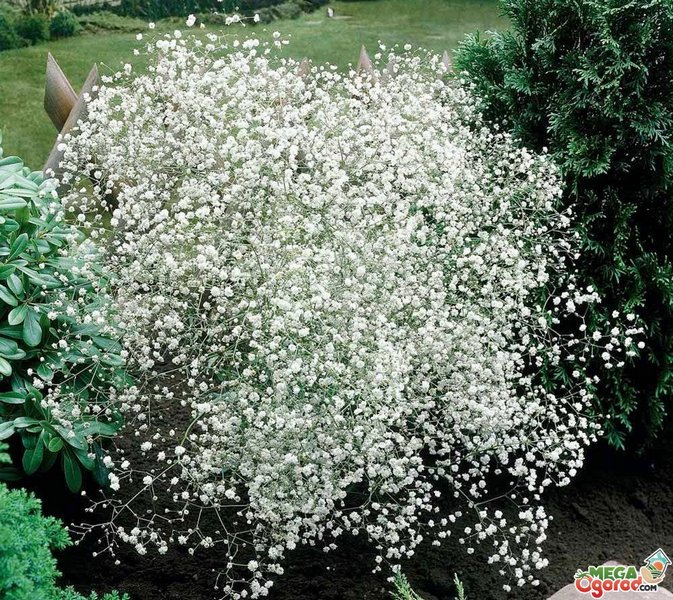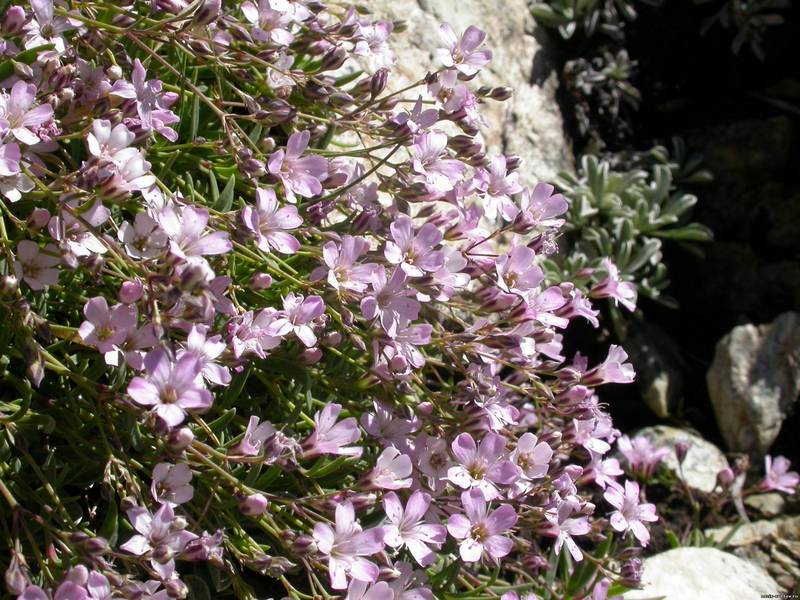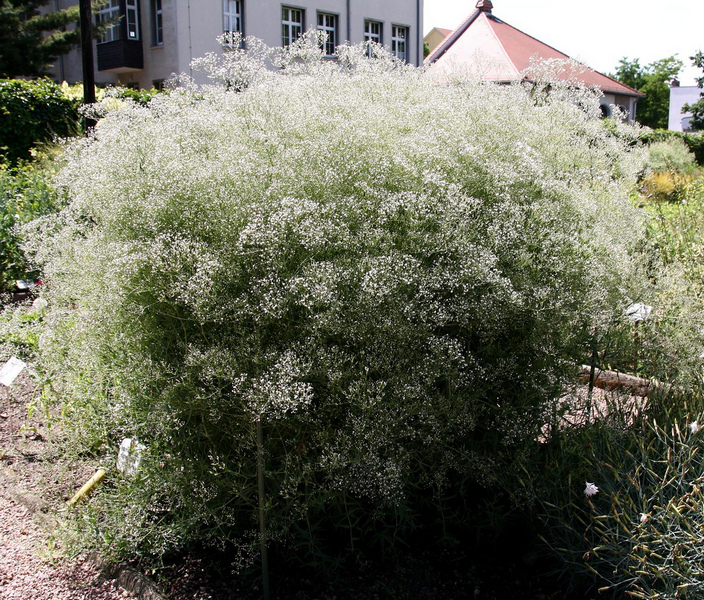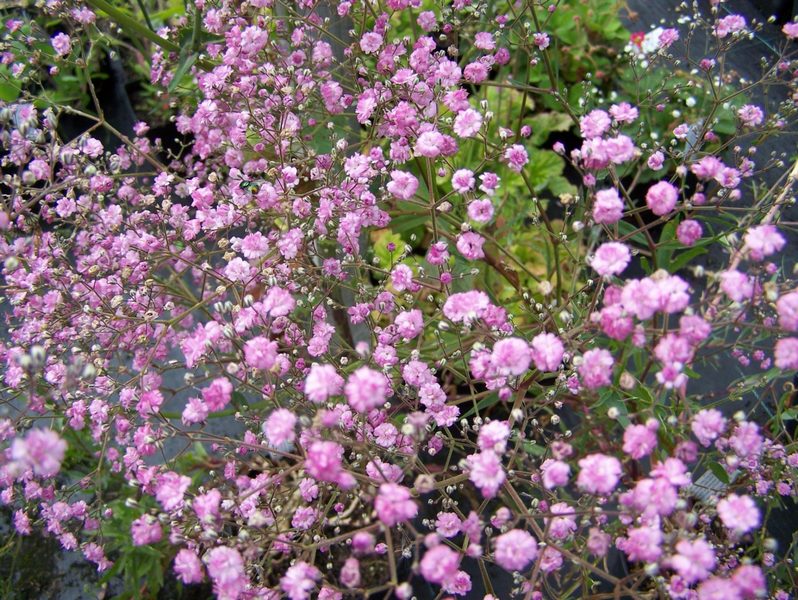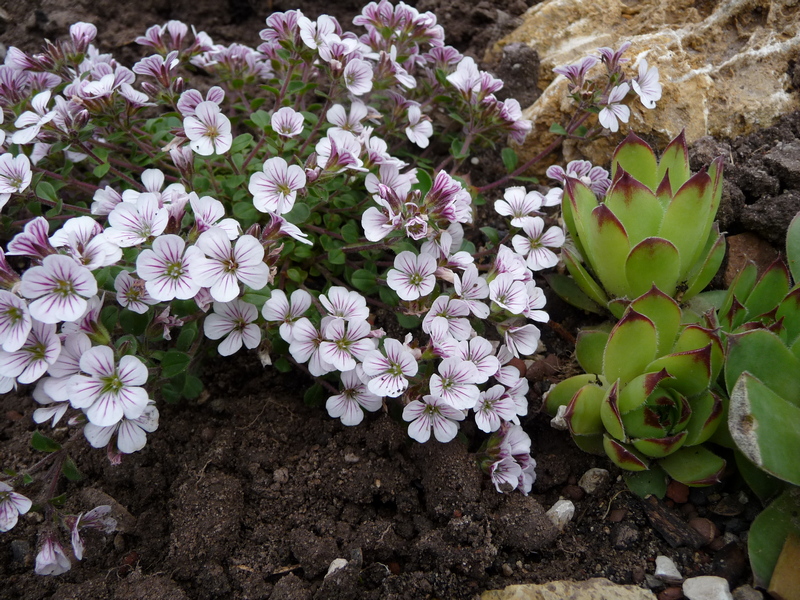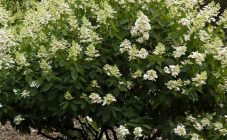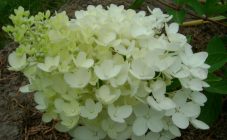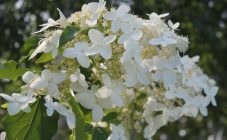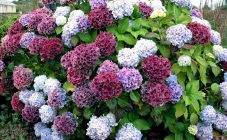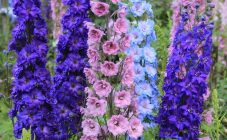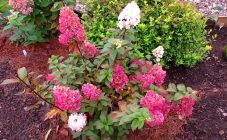Content:
The gypsophila plant (lat. Gypsophila, means "loving lime"), or tumbleweed, kachim, gypsophila is a herb of the Clove family. There are more than 100 varieties of gypsophila: herbaceous annuals and perennials. Their homeland is Eurasia, New Zealand and Northeast Africa. In past centuries, this plant was used only for industrial purposes - for bleaching fabrics and for creating carbonated drinks. Today it is grown as annual and perennial purely for decorative purposes. The most common species is gypsophila paniculata.
Features of the view
It is distinguished from others by the large size of the plant and flowers. From a distance, the bush is an openwork light ball. From above, the stems are covered with a large number of flowers, simple or double, each 8 mm in size. They can be white and pink, creating panicle inflorescences.
The fruit is a multi-seeded capsule containing a huge number of small seeds. There are more than a thousand of them in 1 g, germination lasts 2-3 years. The length of the gypsophila root is 70 cm. It is difficult to transplant such a plant, so it is better to plant it immediately in the right place. The width of the bush is 1 m.
Main characteristics
It is a tall perennial plant. Strongly branched stems, narrow leaves with a downy are closer to the root. Flowers are paniculate fluffy inflorescences, which are simple, double, pink and snow-white.
Description of the plant:
- semi-shrub type up to 120 cm high;
- shrubs in the shape of a ball (hence the name tumbleweed);
- erect shoots with almost no leaves;
- the stems are covered with greenish bark;
- powerful rod-type root system;
- flower in the form of a bell-shaped cup of 5 wide petals;
- very small petals are oval or sharp;
- petals of grayish-green color with a small fluff;
- paniculate and loose inflorescences;
- vertical green line on the petals;
- flowers are dominated by white inflorescences, there are varieties with a pink color;
- the center of the flower is occupied by 10 stamens;
- simple or double flower structure;
- inflorescences with a diameter of usually 6 mm;
- light-loving;
- rarely gets sick, pests bypass.
Varieties of gypsophila paniculata
The most popular varieties:
- gypsophila paniculata Summer Sparkles is a giant among other varieties (height up to 1.2 m, diameter of the bush - up to 1 m). Blooms from June to mid-September. Highly resistant to frost, drought.
- Rosie Vale is a low variety, the flowers change color;
- The snowflake grows up to 0.5 m, has white double flowers;
- Snow flakes - a branched bush, like a ball, up to 1 m in diameter, up to 1 m high. During flowering, it looks like a lush cloud, snow;
- Flamingo - pale pink dense inflorescences, bush height up to 120 cm;
- White Holiday - snow-white flowers, bush height 45 cm, looks like a ball;
- Pink Star - dark pink flowers;
- Pink Holiday is also medium in size, suitable for planting in indoor pots;
- Terry blooms with small white inflorescences.
Paniculata gypsophila looks amazing on the site along with delphiniums.Larkspur, as this flower is also called, has a thin stem with hundreds of flowers that have an original lilac-blue hue. Trunk length from 1 m, flowers with a diameter of 8 cm, the petals have a double structure. There are almost 400 varieties of delphinium, of which about 40 are annuals. These plants are unpretentious to care for, propagate with the help of seeds. Landing takes place in mid-March.
Its most popular varieties:
- The annual delphinium reproduces by seed. It must be planted in a permanent place directly into the ground, because it does not tolerate transplanting well. Favorable conditions for growth: cool air (10-15 ° C), darkness and moisture. Therefore, sowing is best done in March-April or September-October. The plant is self-seeding, so you no longer have to think about replanting.
- The New Zealand delphinium is distinguished by large inflorescences and tall stems, completely covered with flowers. The length of the cluster of inflorescences is up to 70 cm, and the diameter of the flowers is 9-10 cm. The plant is covered with green below, the leaves are bright green and strongly dissected.
- Terry delphinium is a perennial winter-hardy plant with a long flowering period - from May to August. Stem height 1-2 m, large double or semi-double flowers, mostly blue and purple. There is also a terry delphinium of black, red and even yellow colors. His homeland is New Zealand.
- Delphinium Magic Fountain is a perennial medium-sized herb, the height of which is 60 cm. It is strewn with large double inflorescences of pink, dark purple, blue, blue and white tones. Blooms in the first year, flowers can stand in a vase for up to 2 weeks. Flowering period June-July.
Planting and growing gypsophila
For seedlings, seeds must be sown in March. The soil must be prepared by adding to the purchased garden soil, sand, chalk. Seeds should be spread on wet soil at a distance of 10 cm from each other. So the seedlings will not be dense, and a pick is not required. After laying out the seed, you can sprinkle it a little with the remaining soil.
The dish with seeds can be covered with glass. Germinate at home at room temperature. The first shoots will appear on the second day, but the leaves will form in 2-3 weeks. The container should be on the sunny side all the time. Do not over-moisten the soil.
Gypsophila can also be grown from seed directly in the open field, for example, in a greenhouse. The soil is prepared in the same way as for indoor cultivation. But the seeds will hatch a little later - after 10 days. A month later they dive. It should be planted in a permanent place in the fall. The distance between the shoots is made at least 1 m.
But it is best to breed gypsophila by cuttings. Before flowering, the upper part of the stem about 8 cm long is cut off. The soil is moistened and a cutting is inserted into it. The dishes are placed in partial shade to avoid direct sunlight. You can cover the top with a film or a jar, which must be removed periodically so that fresh air can flow to the cuttings. Cuttings take root within 2 months. Plants are transplanted into open ground closer to autumn.
Light sandy soil works well for gypsophila. The porous soil is excellent for air permeability and prevents the accumulation of moisture in the upper layers. Stony soil is also suitable for planting.
Before planting in the ground, sand and small stones should be poured into the holes, and lime and chalk should be poured into the sour soil.
In general, gypsophila is easy to care for, as it is unpretentious. Fertilizers are fed from 2 weeks.
How to water properly:
- young plants need daily watering, under normal conditions - in a couple of days;
- pour water strictly under the roots;
- mature bushes are watered when the soil is dry.
Diseases and pests
Due to insufficient care, the plant can be attacked by rot and rust, as well as gall or cyst nematodes. In this case, the bushes are irrigated with phosphamide several times. If this does not help, you need to dig out the bush and rinse the roots with water heated to 50-55ºC, which is detrimental to the nematode. If rust and gray rot have formed, then the flowers are sprayed with contact fungicides - oxyx, Bordeaux liquid or copper sulfate.
Gypsophila is widely used in landscape design when decorating walls, alpine hills, stone gardens. Flowers will fill the empty areas of the garden where other plants are fading, visually increase the space with their airiness and volume. They look impressive both fresh and dry. No wonder the variety is so popular when drawing up bouquets and decorations.
